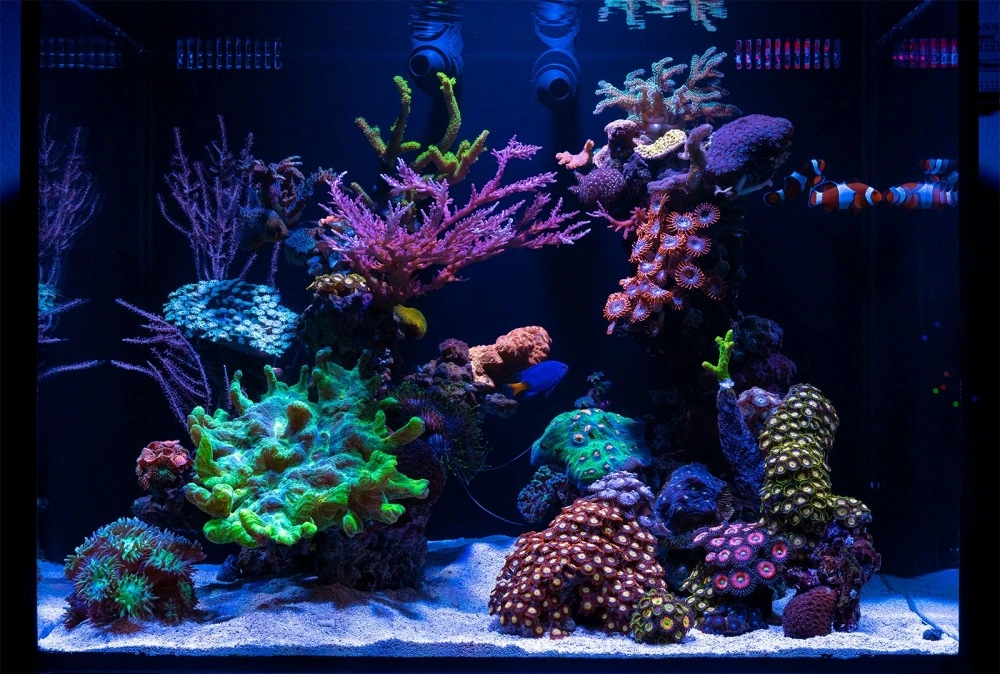Stunning 40-Gallon Reef Tank – SaltyTanks's TOTM | NanoReef

Tank Specifications
Volume: 40 Gallons / 151 Liters
Dimensions (L × W × H):
24.0" ×
20.0" ×
19.0"
61.0cm ×
50.8cm ×
48.3cm
Equipment List
No equipment information available
Frequently Asked Questions
How often should I clean my reef tank?
Every 1-3 days, you should use a scraper to remove film algae from the display glass and acrylic backdrop, blow debris off rocks and corals with a turkey baster, stir the sand bed, clean the skimmer cup, and change filter floss. Additionally, every ~6 months, perform a deep clean on the equipment like the return pump, skimmer system, and the gyre pump.
What is the ideal water change schedule?
Perform a 5-gallon water change, approximately 15% of your tank's volume, once a week using Red Sea Coral Pro and RODI filtered water.
How do I keep my water parameters stable?
Regularly test your water parameters once a week for Alkalinity (aim for 8.0-8.5), Phosphates (aim for 0.04-0.08), and Salinity (aim for 1.025-1.026). Consistent dosing of ATI Essentials Pro 2-part will help maintain appropriate levels of major and trace elements.
What is the feeding schedule for fish and corals?
Feed your fish and shrimp once a day in the evening, using a combination of frozen Hikari mysis and spirulina brine shrimp. For corals, feed twice a week with Reef Roids, where half is target fed (pumps off for 15-20 minutes) and half is broadcast fed (pumps on).
How do I manually dose coral foods?
Manual dosing should include 2 drops of Brightwell Aquatics' Coral Amino, and both Phyto Feast and Oyster Feast (2 drops each) once a day in the evening.
What type of filtration does my nano reef tank need?
Mechanical filtration can be achieved through an Aquamaxx HOB skimmer and filter floss. For biological filtration, use Real Reef dry rock, Caribsea Fiji pink sand, Marinepure biofilter balls, and Chaetomorpha algae. Chemical filtration can include Seachem's Phosguard and activated carbon.
How can I maintain ideal temperature in my reef tank?
Utilize a ViaAqua 200 watt titanium heater along with a Honeywell fan and an Inkbird thermostat/temp controller to keep the temperature stable.
How often should I test my water parameters?
Test for Alkalinity, Phosphate, and Salinity once a week to ensure they stay within the recommended ranges.
What additional tests should I be considering for my tank?
While weekly testing for Alkalinity, Phosphate, and Salinity is essential, you may also want to consider conducting an ICP test occasionally to analyze trace elements and overall water quality.